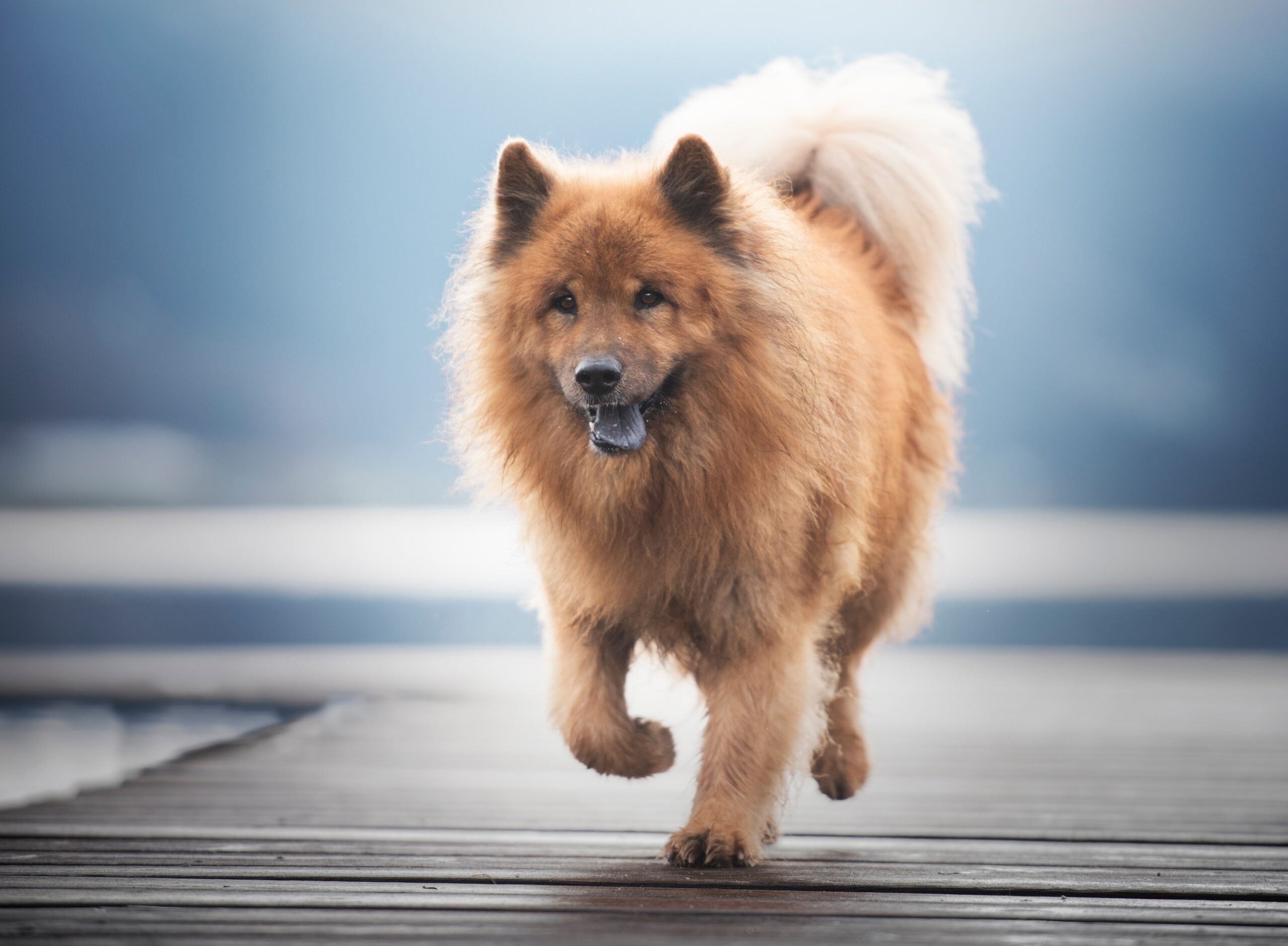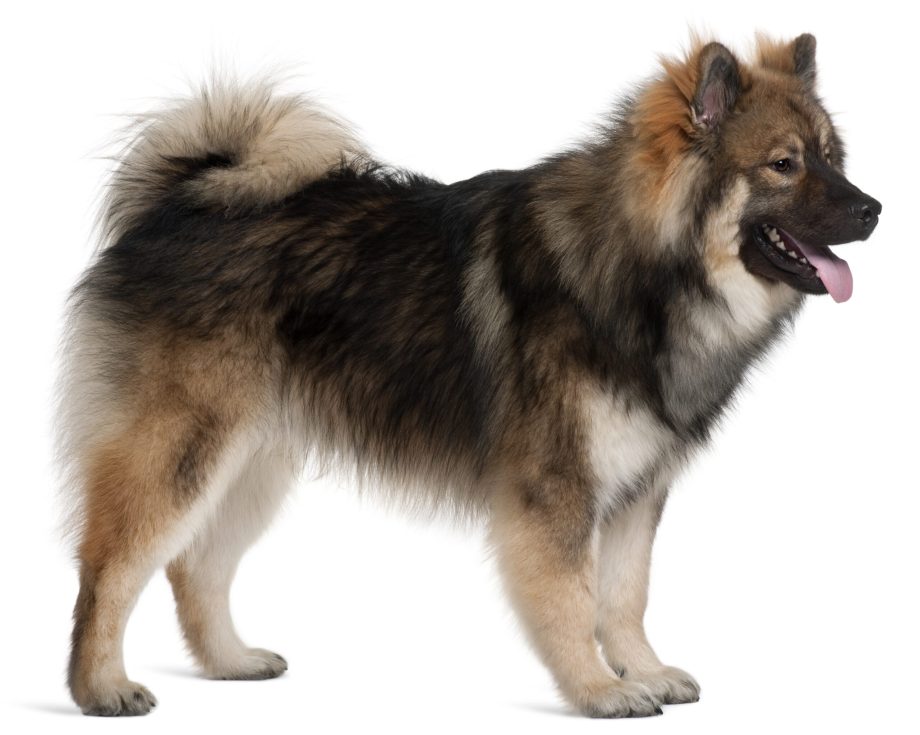The Eurasier, or Eurasian dog, is a spitz-type breed of dog originating in Germany. These dogs are a cross between the Chow Chow and German Spitz, with later input from the Samoyed and share many of the same characteristics.
These medium-sized dogs are well-balanced, with foxy faces and pricked ears and can have blue-black, pink or spotted tongues. They have a profuse coat which consists of a thick undercoat and a medium-long top coat of guard hair. The hair is shorter on the muzzle, face, ears, and front legs, with longer feathered areas on the back of the front legs and hind legs and around the neck. They come in a beautiful array of colours including fawn, red, wolf-grey, black, and black and tan. Eurasier make wonderful companions, which are calm, confident and even-tempered. They strongly bond with their family and will be loving with all members of the family. They can be wary of strangers but not aggressive and make good watchdogs. They are sensitive and intelligent dogs, which respond to gentle consistent training. They love time spent outdoors with their family and will be lively and confident walking companions and playmates. Back home they are calm, gentle companions which are happiest in the company of their owners.

History
Eurasiers originated in Germany in the 1940s when German professor, Julius Wipfel, crossed Chow Chow and Keeshond to create a breed with the best qualities of both breeds. This initial breed was referred to as the Wolf-Chow and was later crossed with the Samoyed. The breed was recognised by the Fédération Cynologique Internationale in 1973 and by The Kennel Club in 2003.





